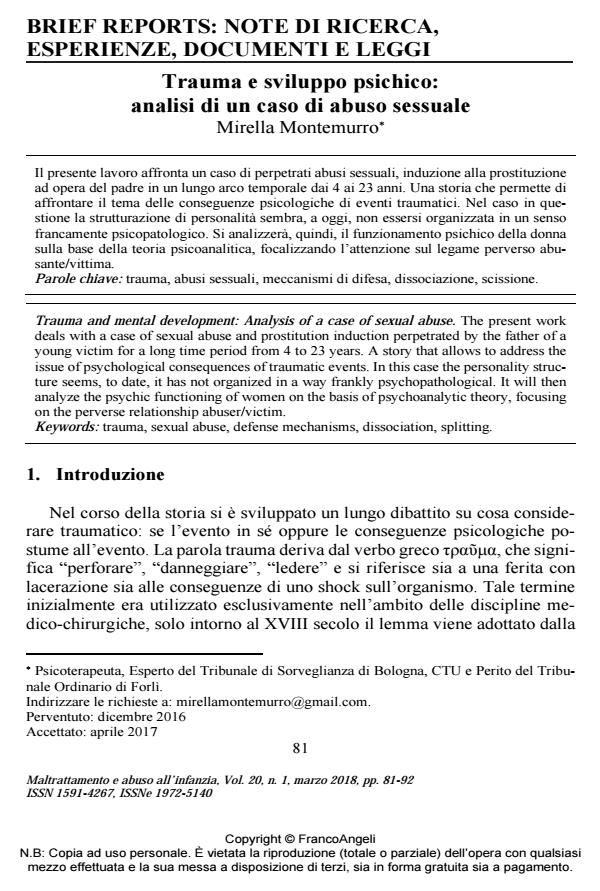Trauma and mental development: Analysis of a case of sexual abuse
Journal title MALTRATTAMENTO E ABUSO ALL’INFANZIA
Author/s Mirella Montemurro
Publishing Year 2018 Issue 2018/1
Language Italian Pages 12 P. 81-92 File size 201 KB
DOI 10.3280/MAL2018-001006
DOI is like a bar code for intellectual property: to have more infomation
click here
Below, you can see the article first page
If you want to buy this article in PDF format, you can do it, following the instructions to buy download credits

FrancoAngeli is member of Publishers International Linking Association, Inc (PILA), a not-for-profit association which run the CrossRef service enabling links to and from online scholarly content.
The present work deals with a case of sexual abuse and prostitution induction perpetrated by the father of a young victim for a long time period from 4 to 23 years. A story that allows to address the issue of psychological consequences of traumatic events. In this case the personality structure seems, to date, it has not organized in a way frankly psychopathological. It will then analyze the psychic functioning of women on the basis of psychoanalytic theory, focusing on the perverse relationship abuser/victim.
Keywords: Trauma, sexual abuse, defense mechanisms, dissociation, splitting
Mirella Montemurro, Trauma e sviluppo psichico: analisi di un caso di abuso sessuale in "MALTRATTAMENTO E ABUSO ALL’INFANZIA" 1/2018, pp 81-92, DOI: 10.3280/MAL2018-001006